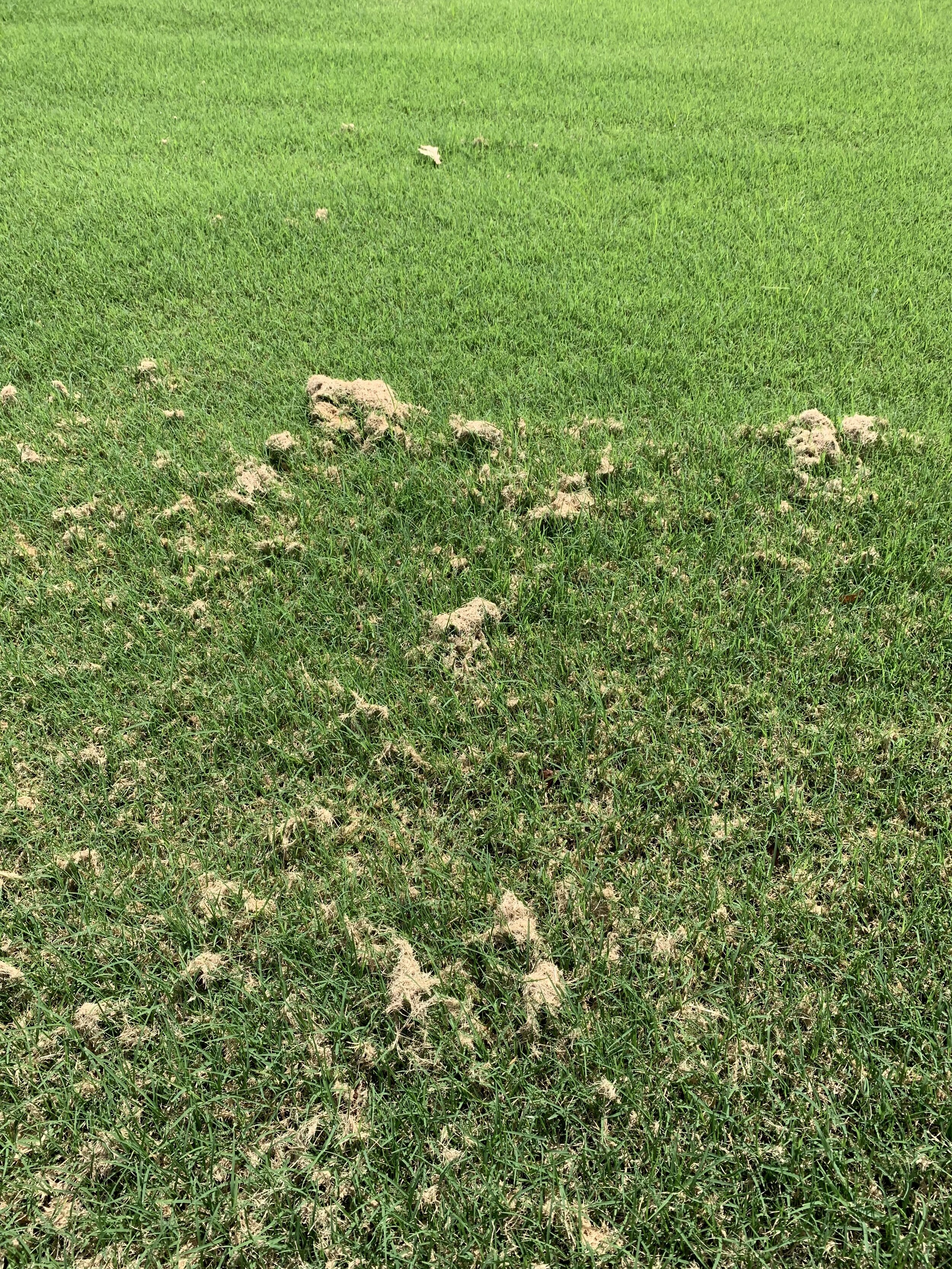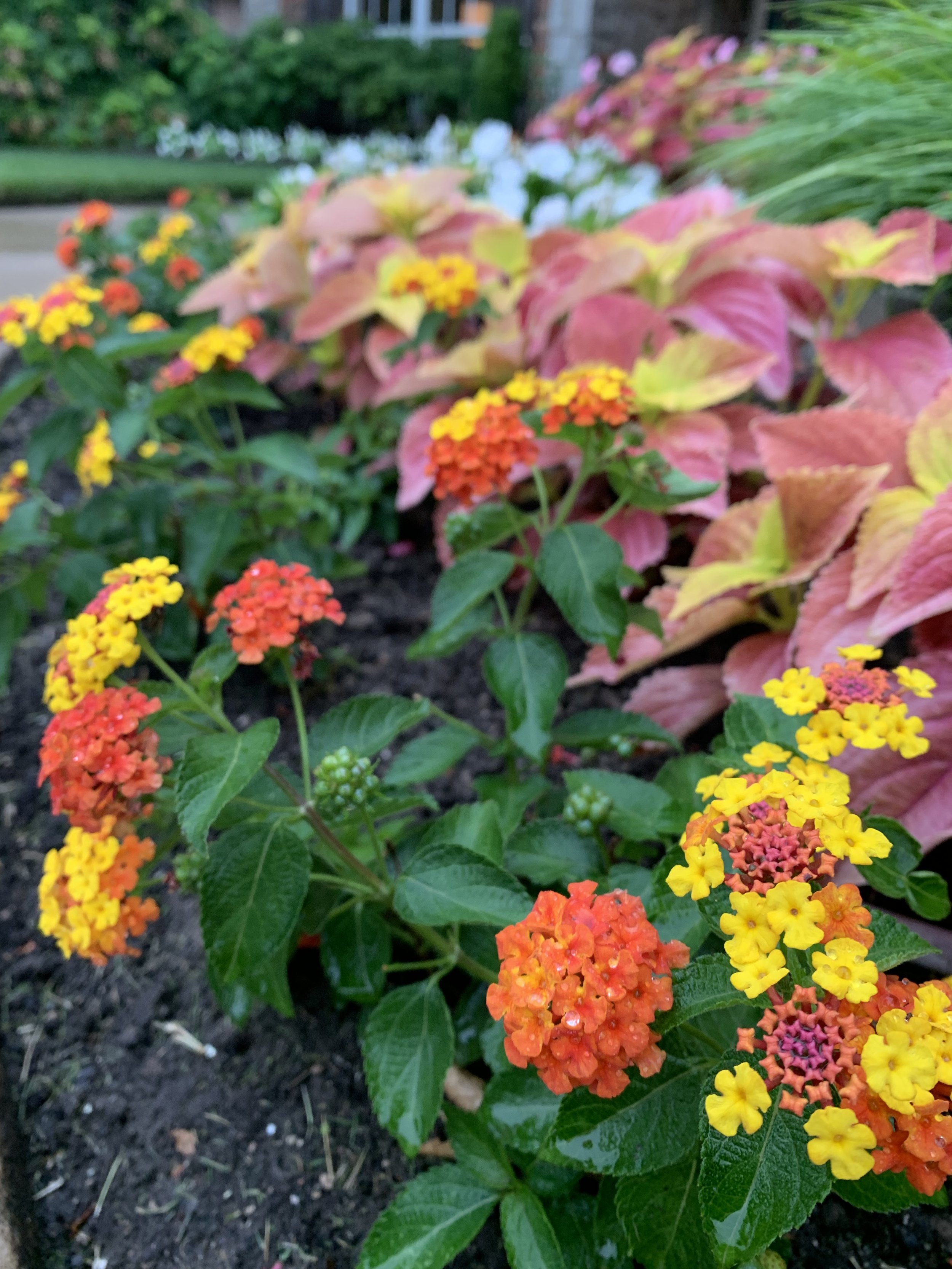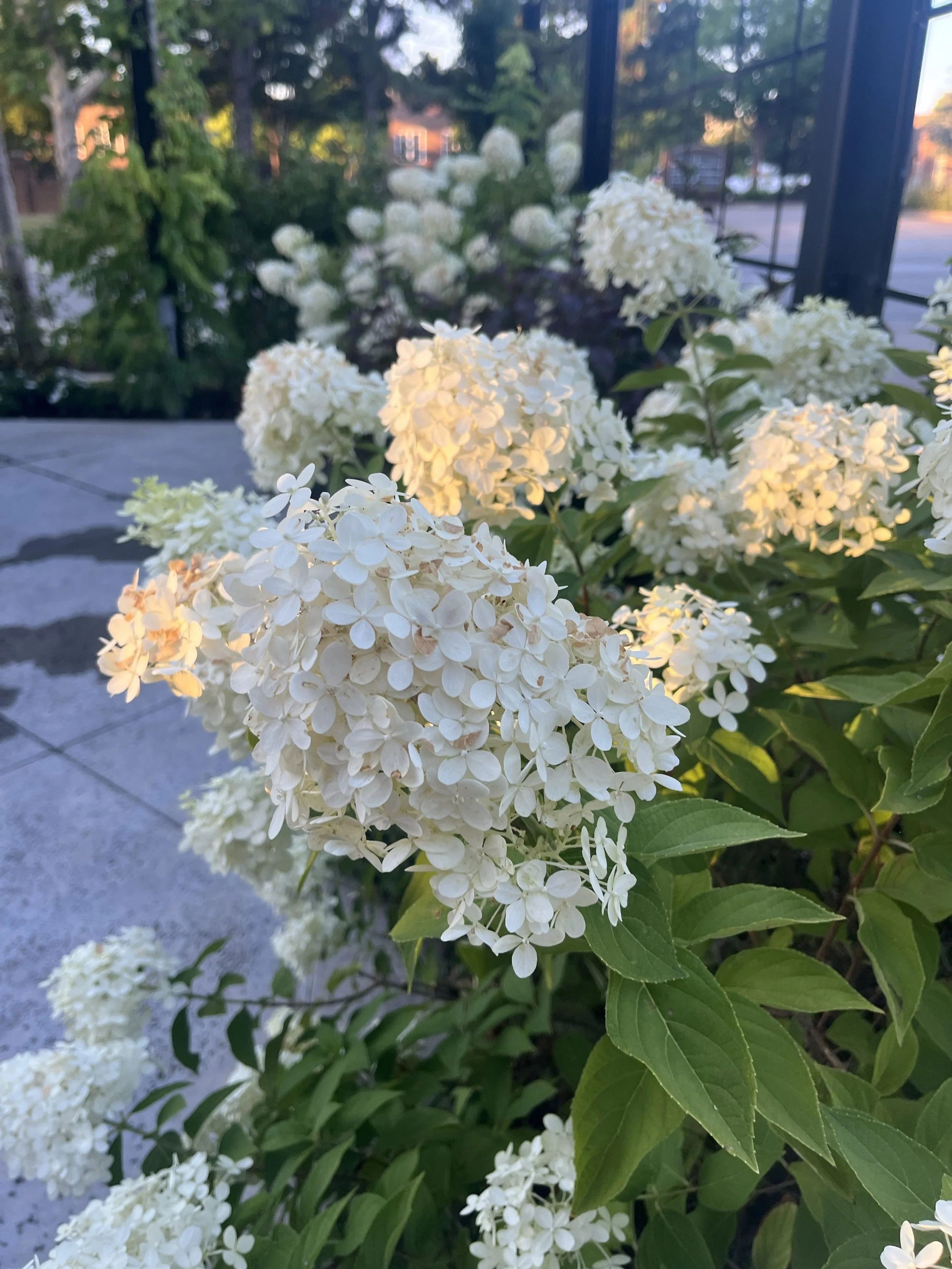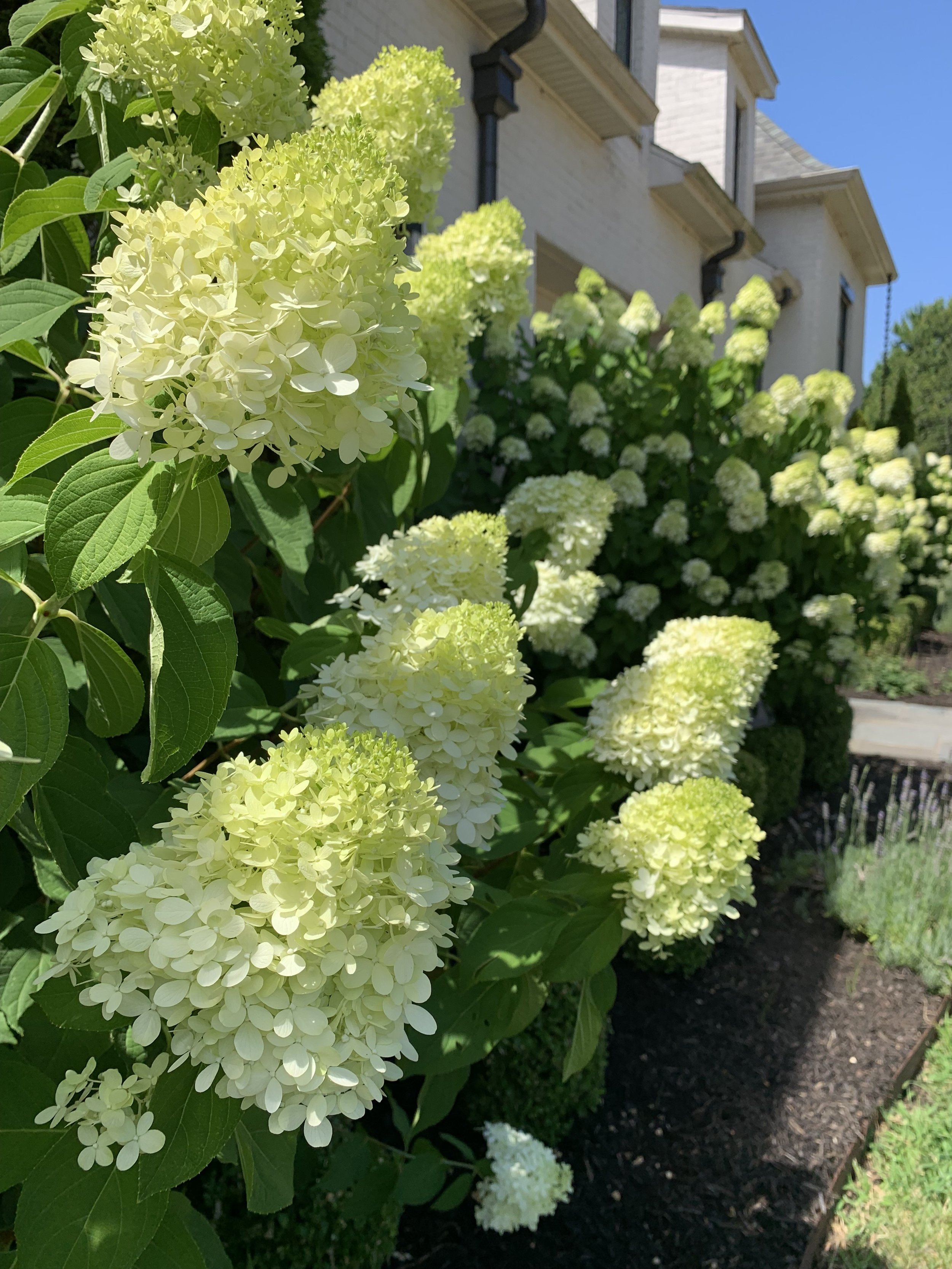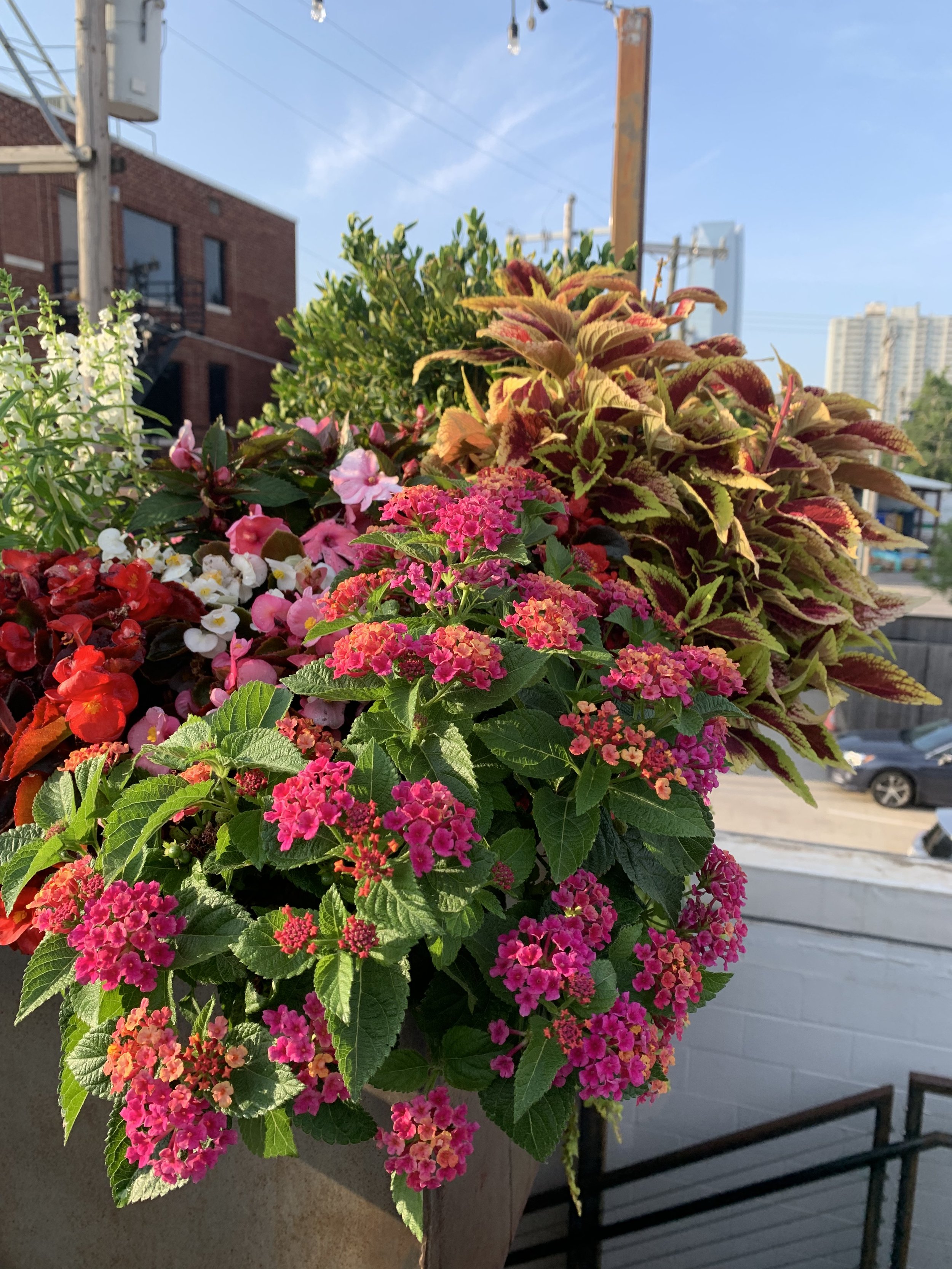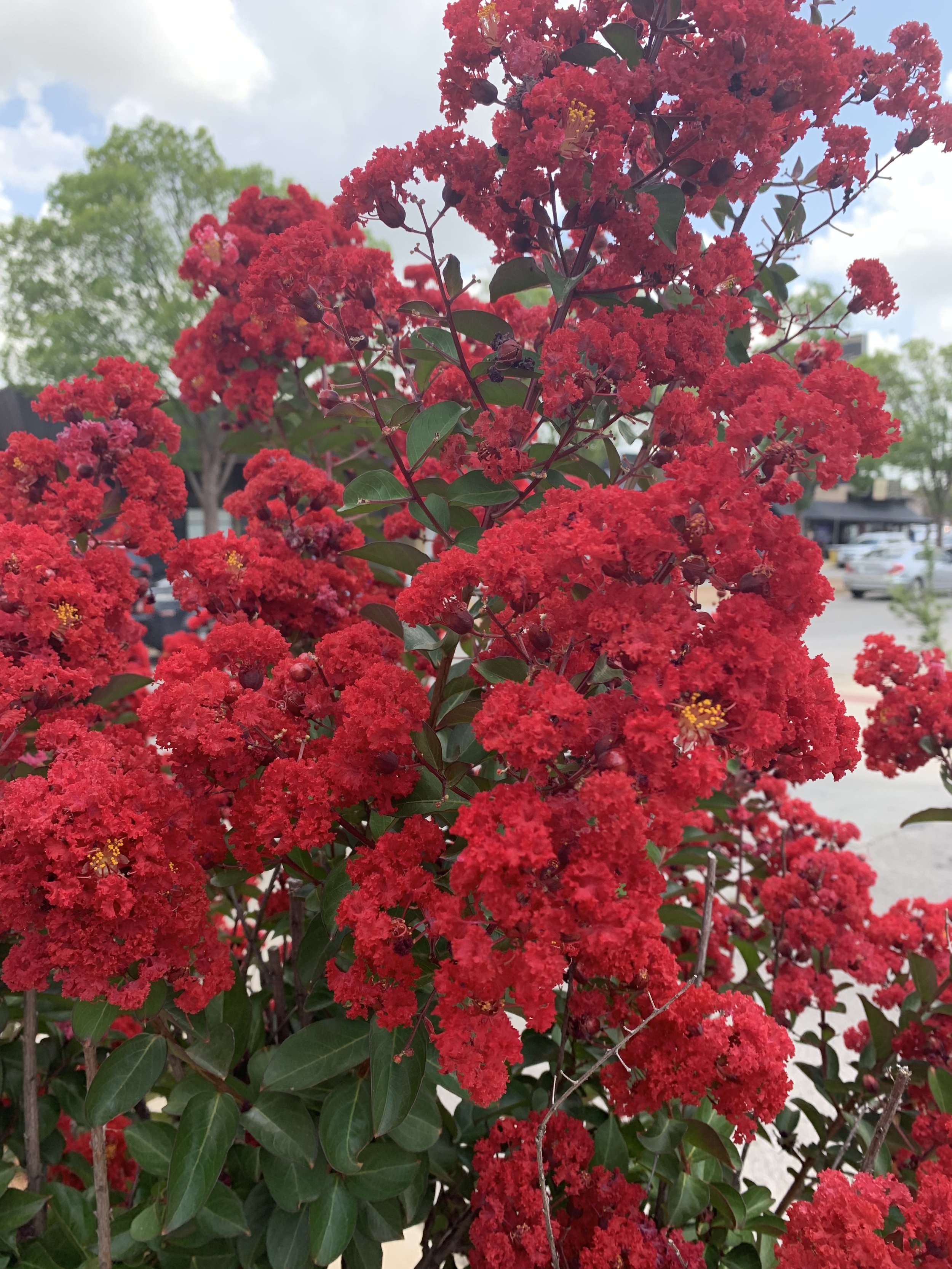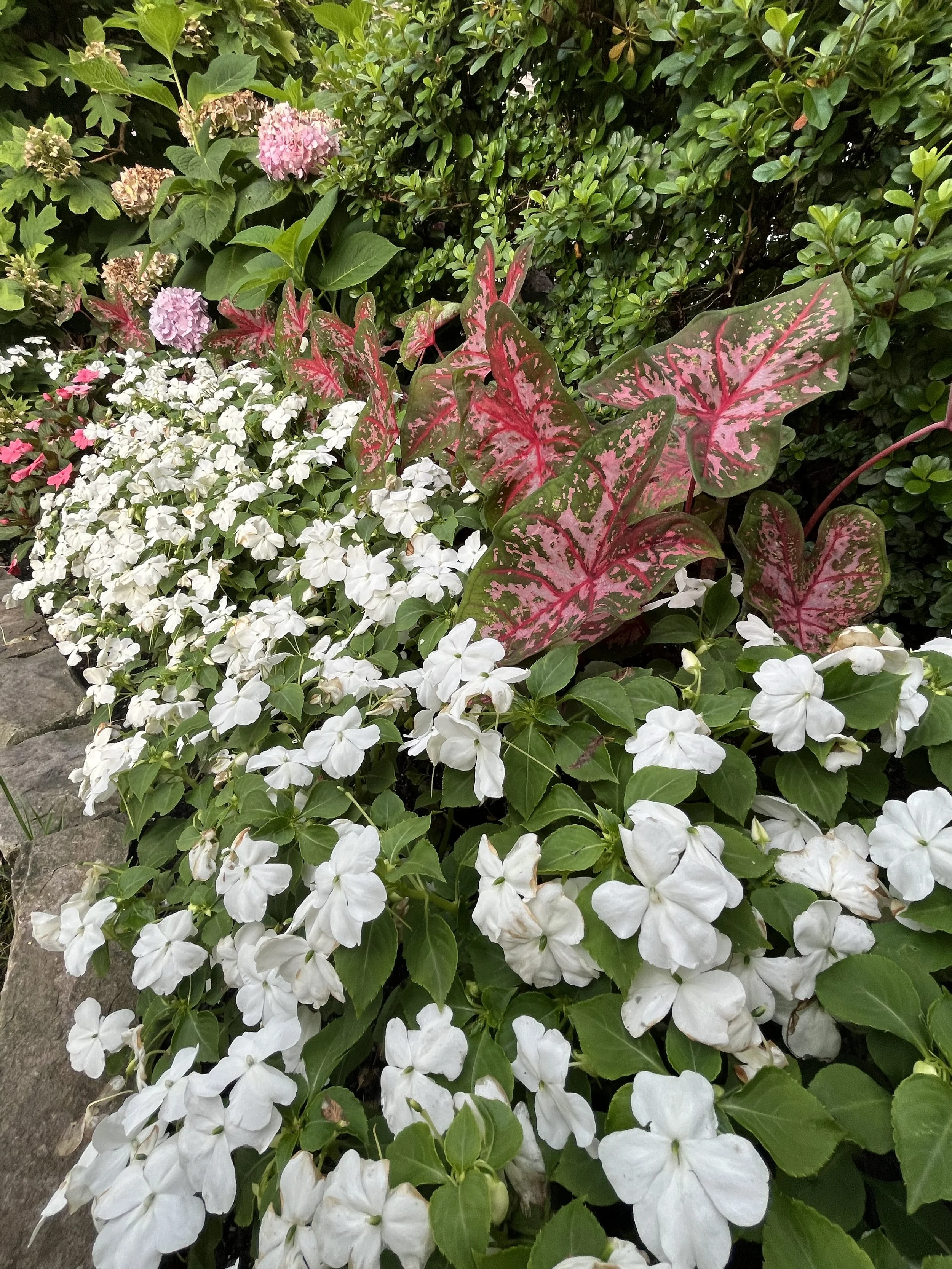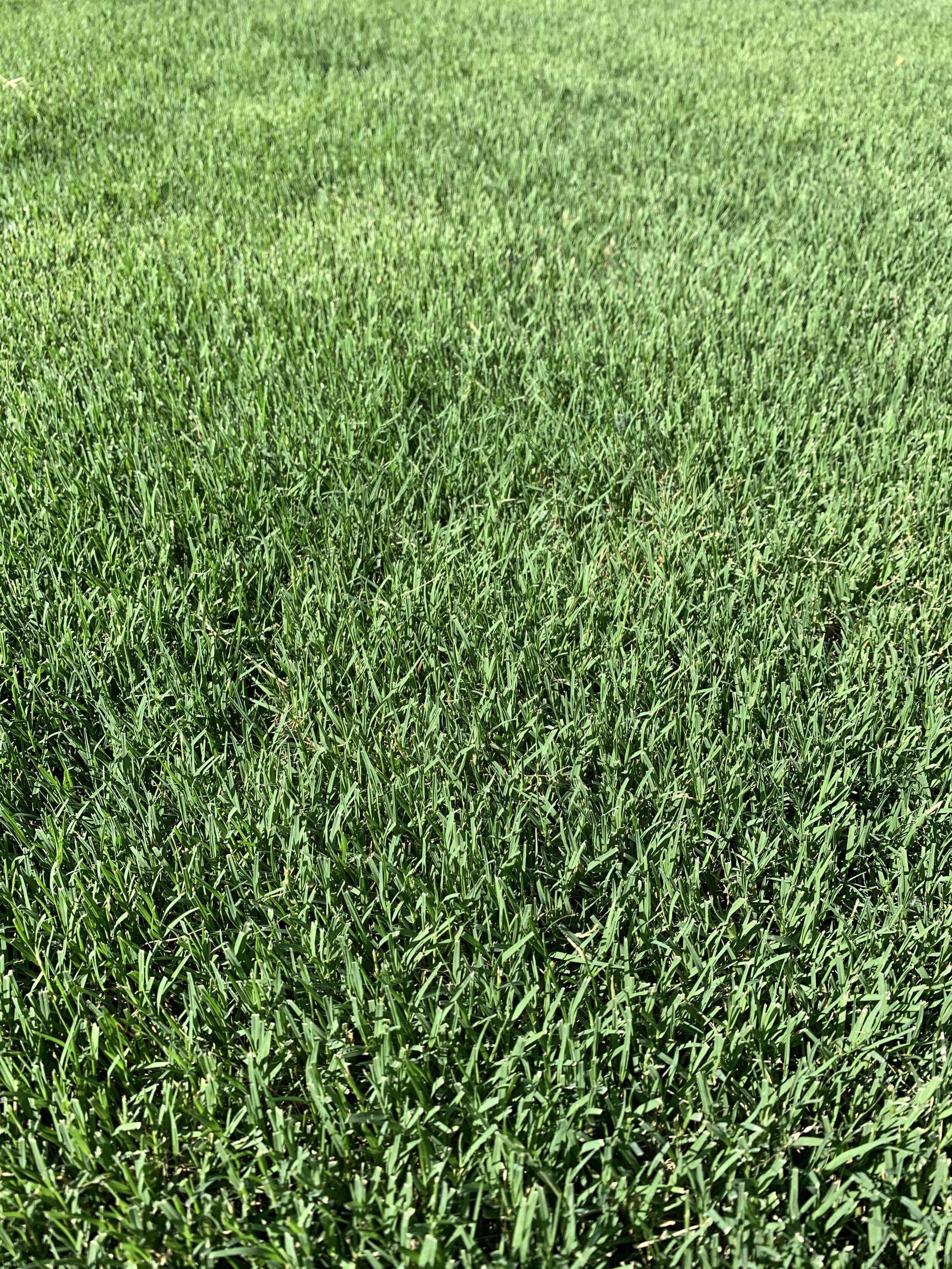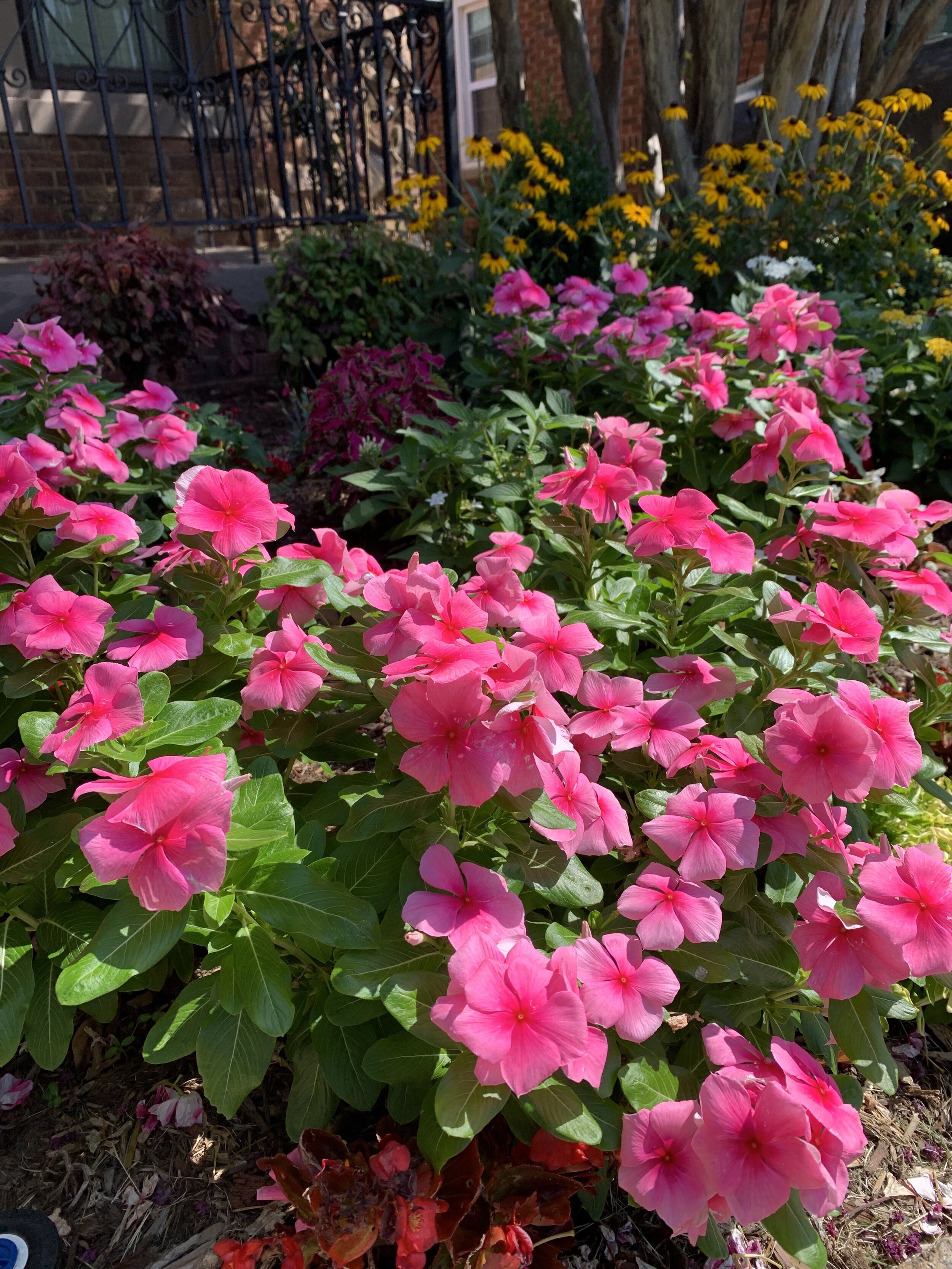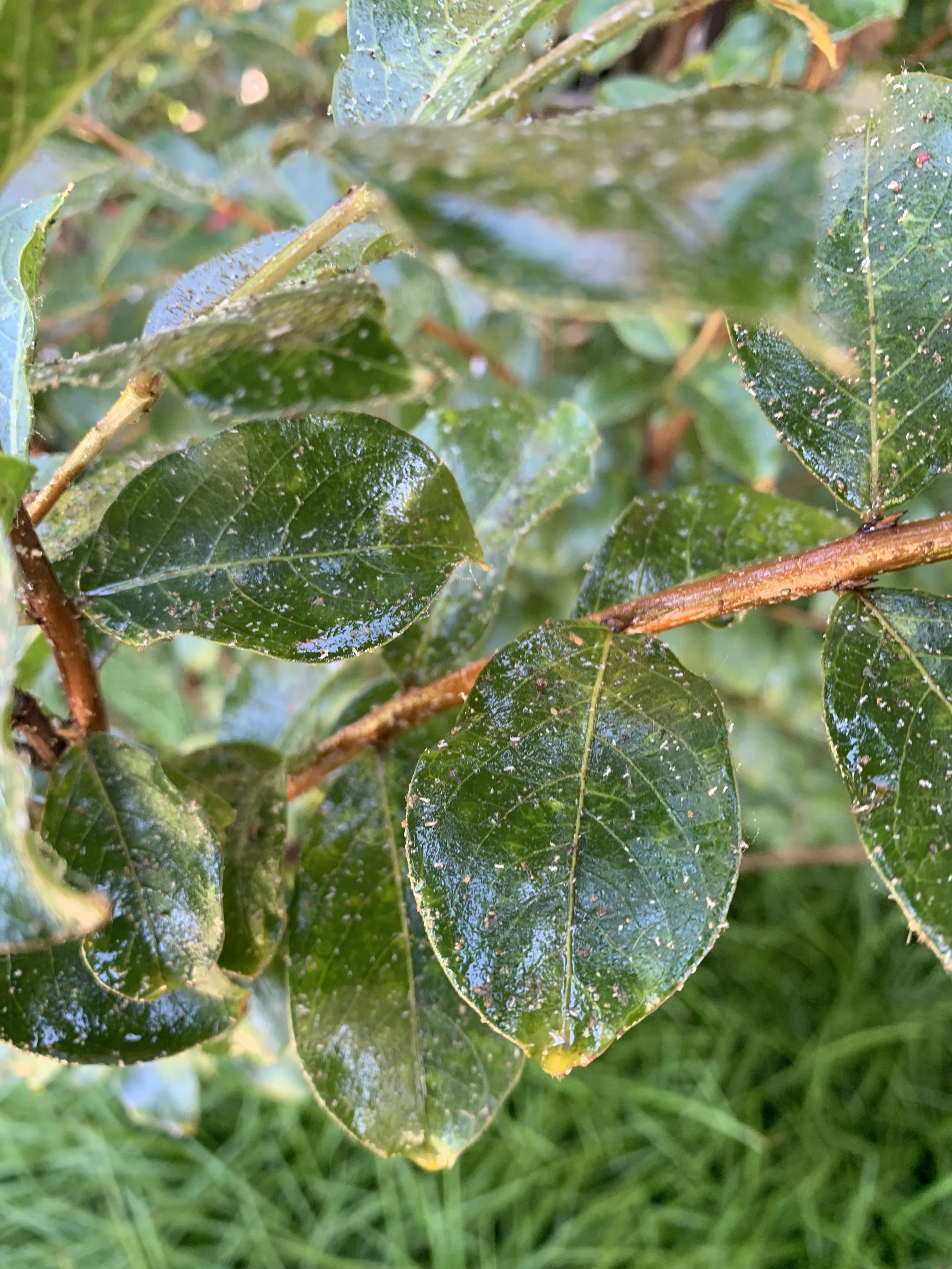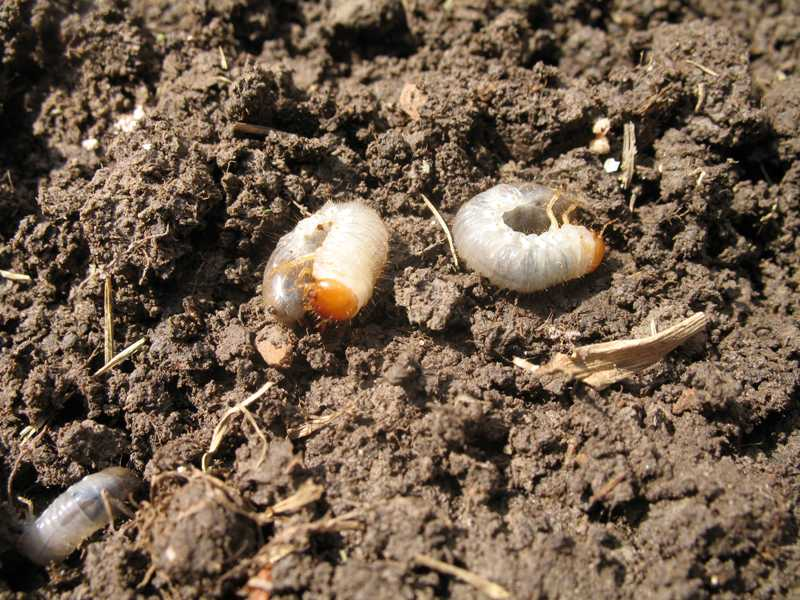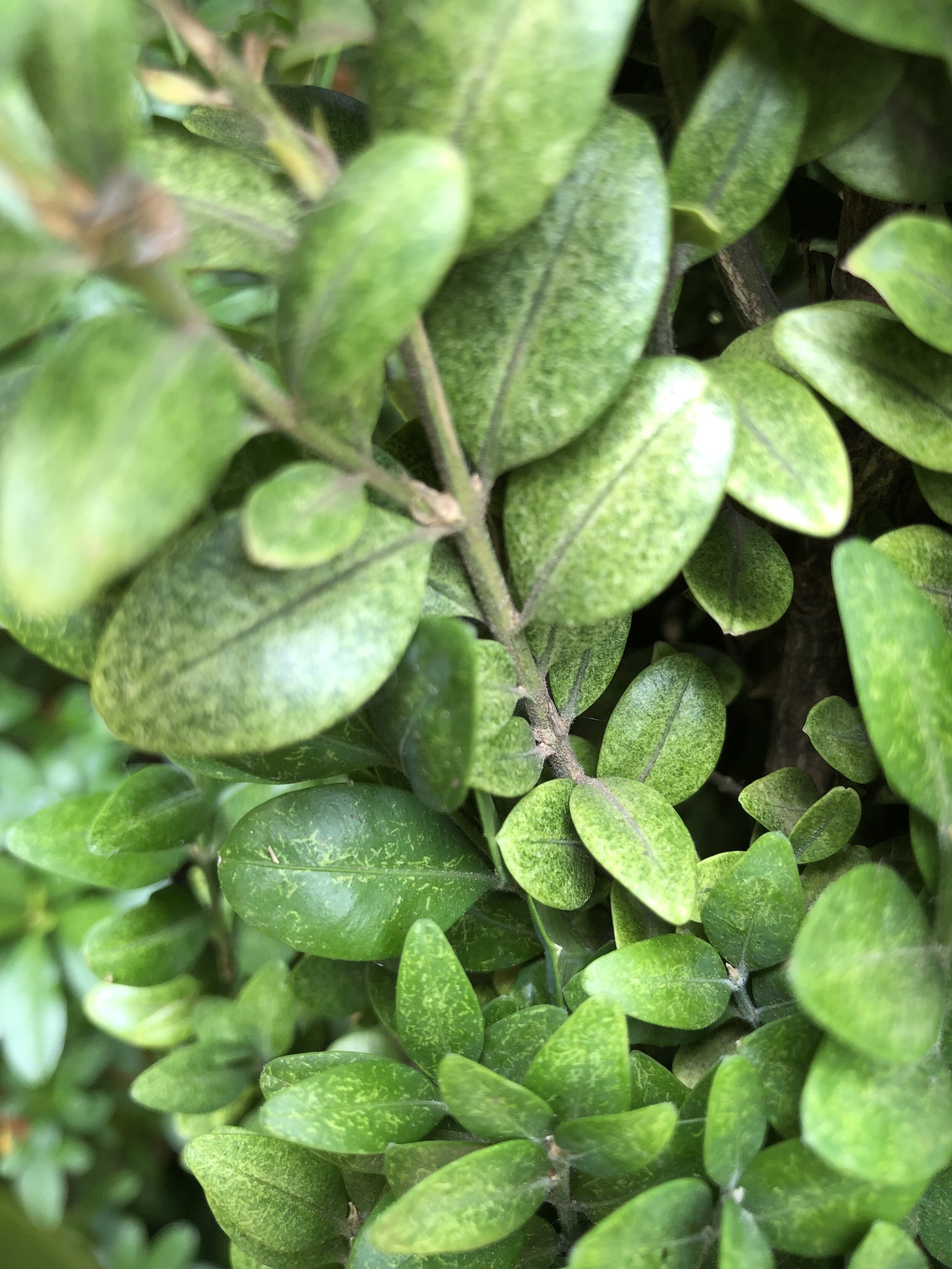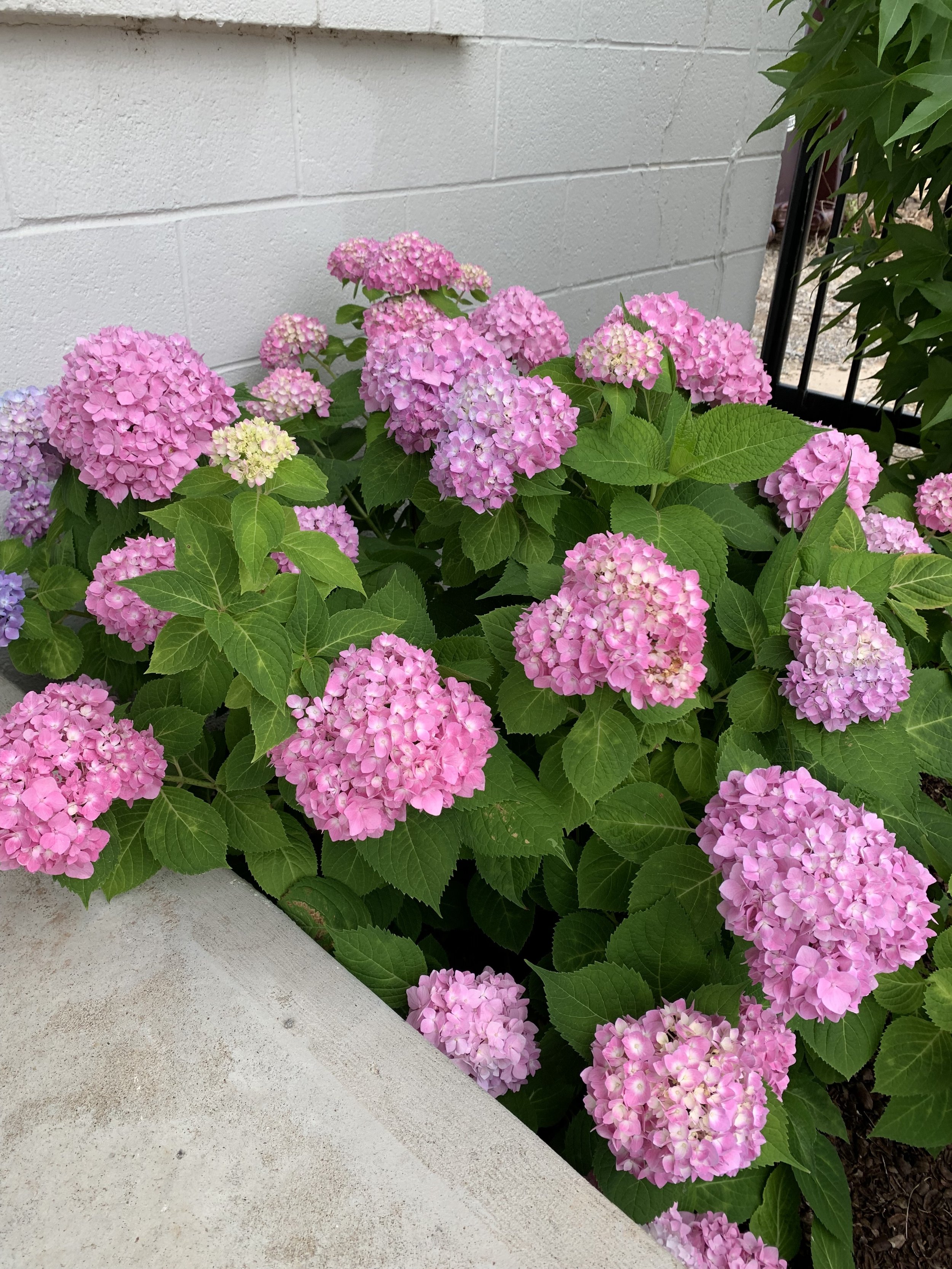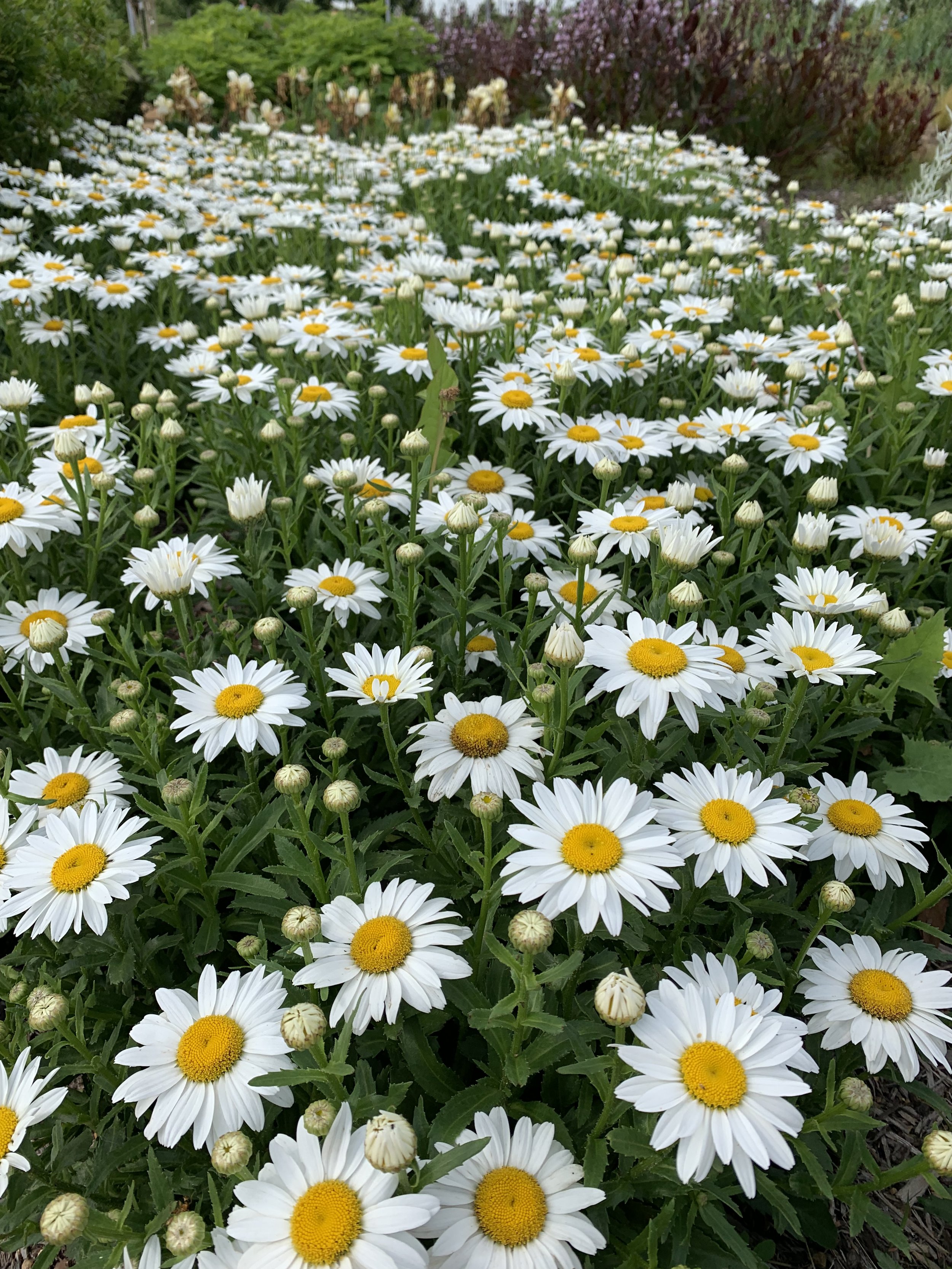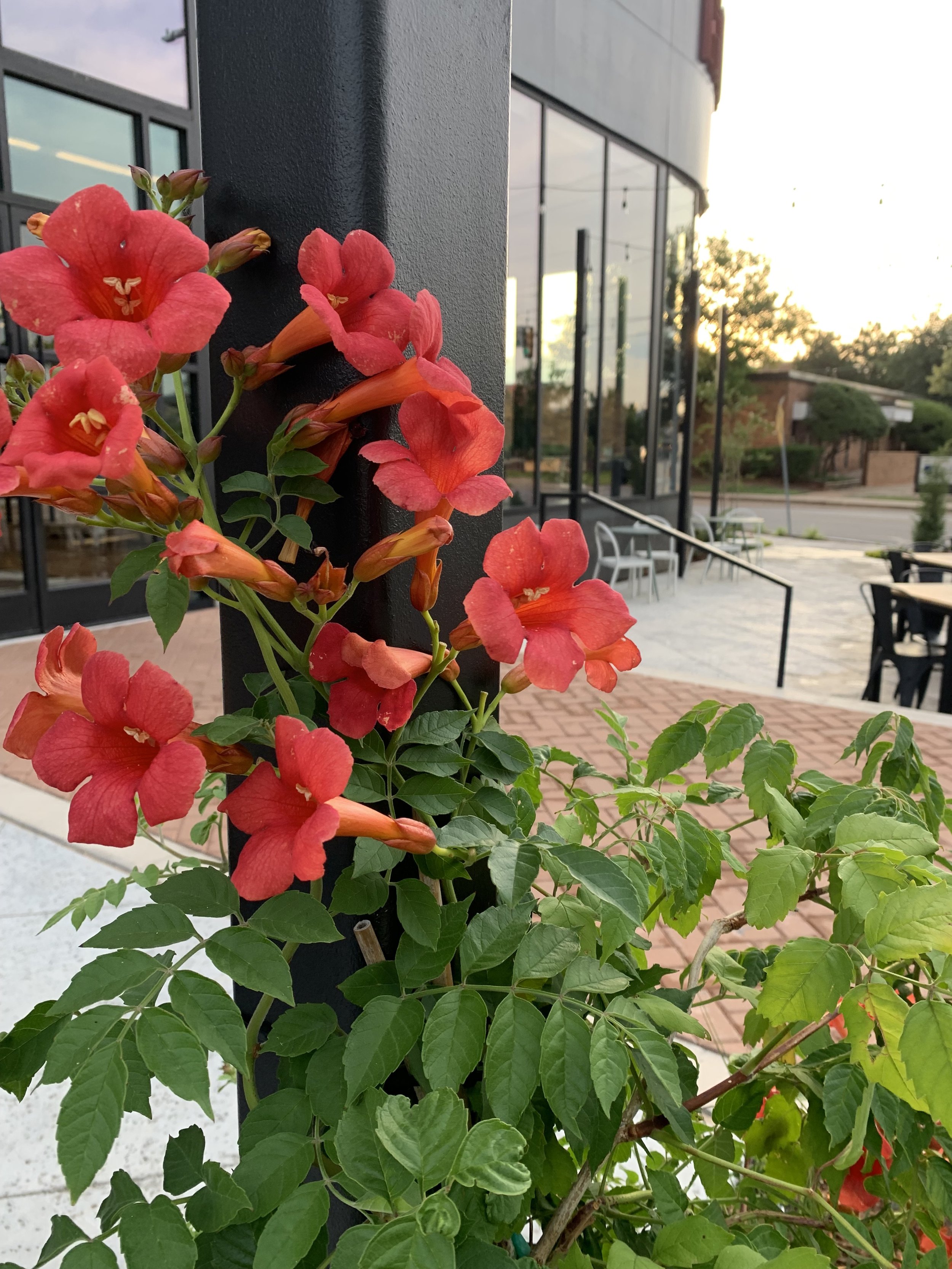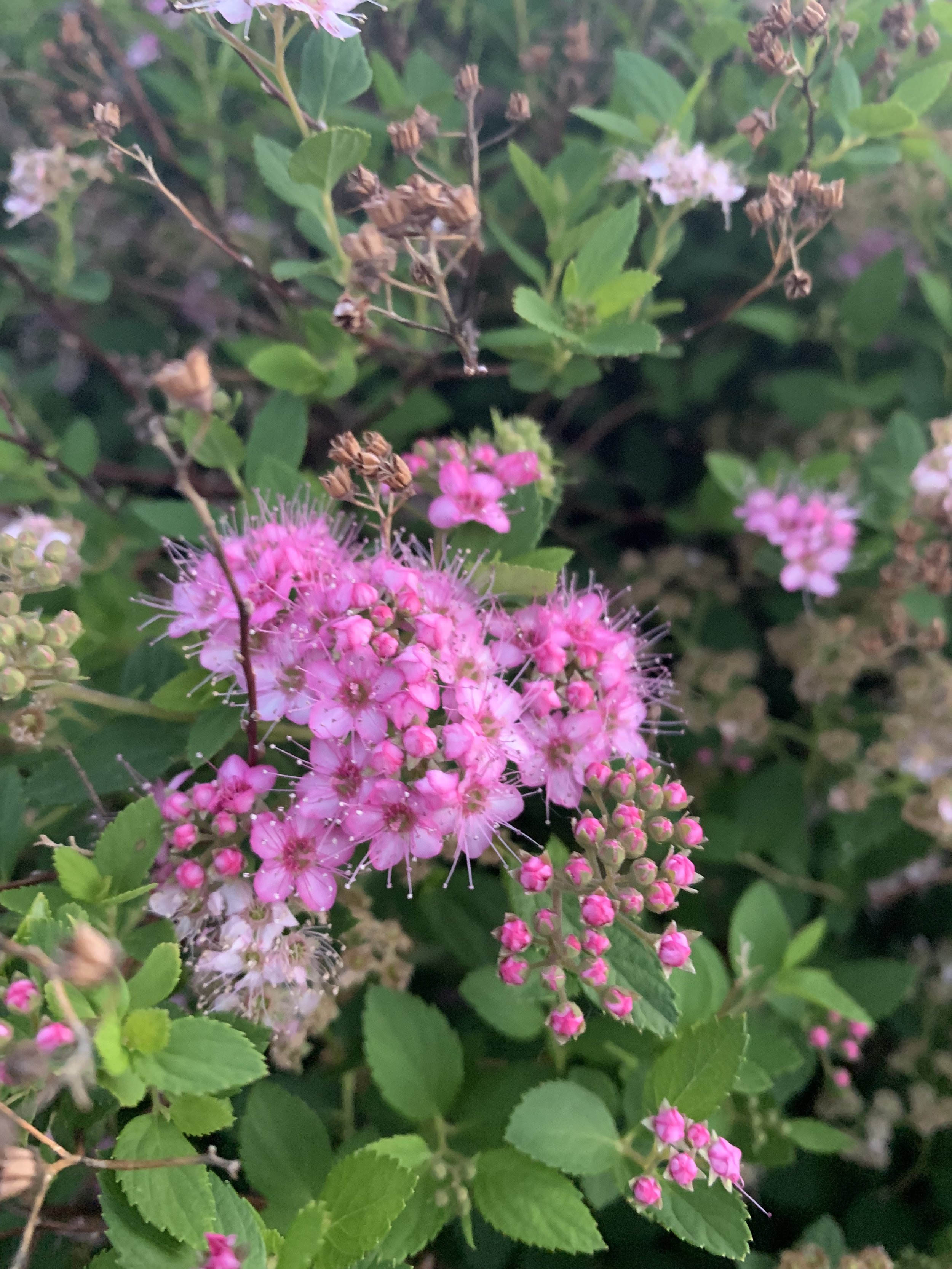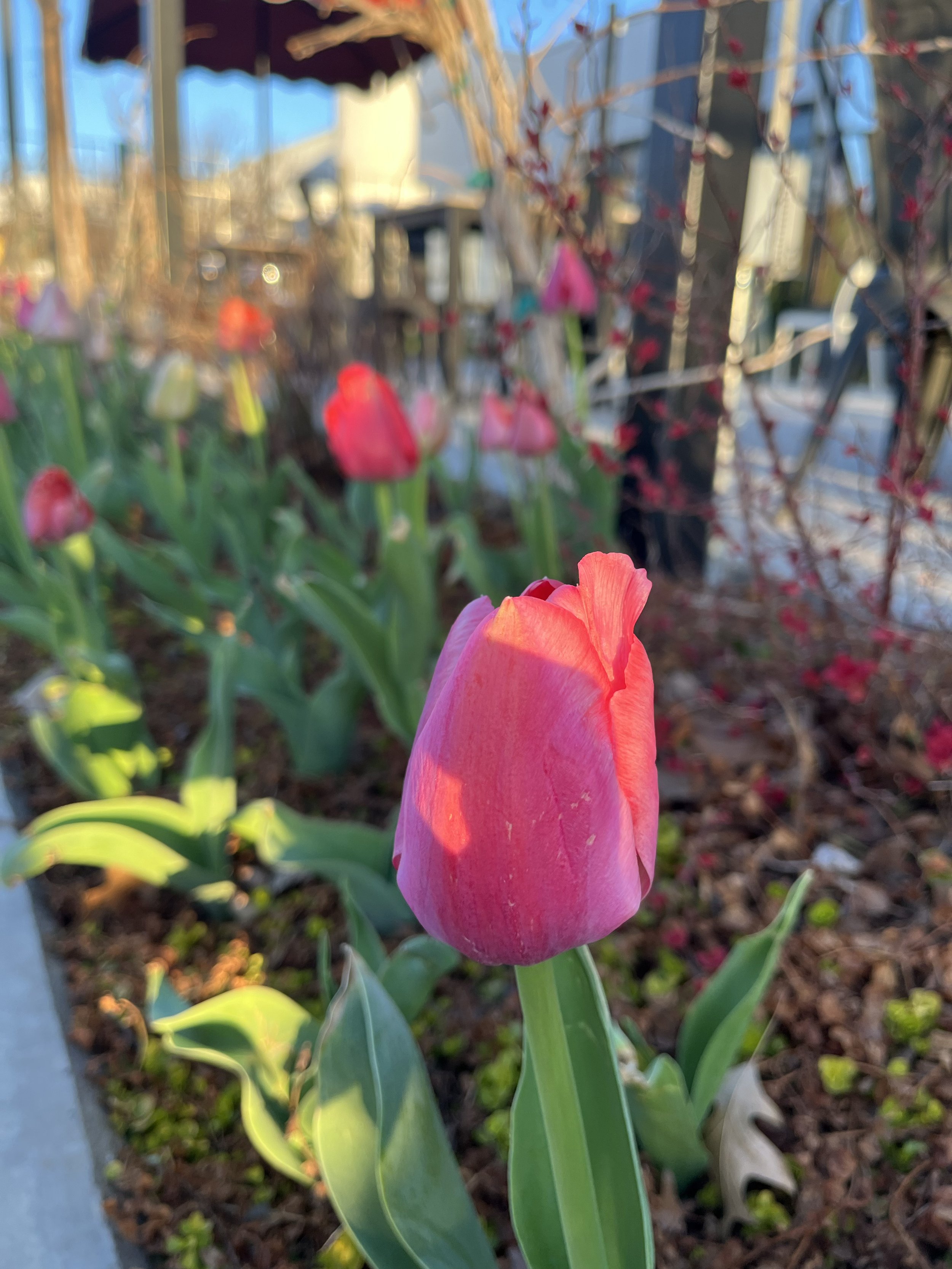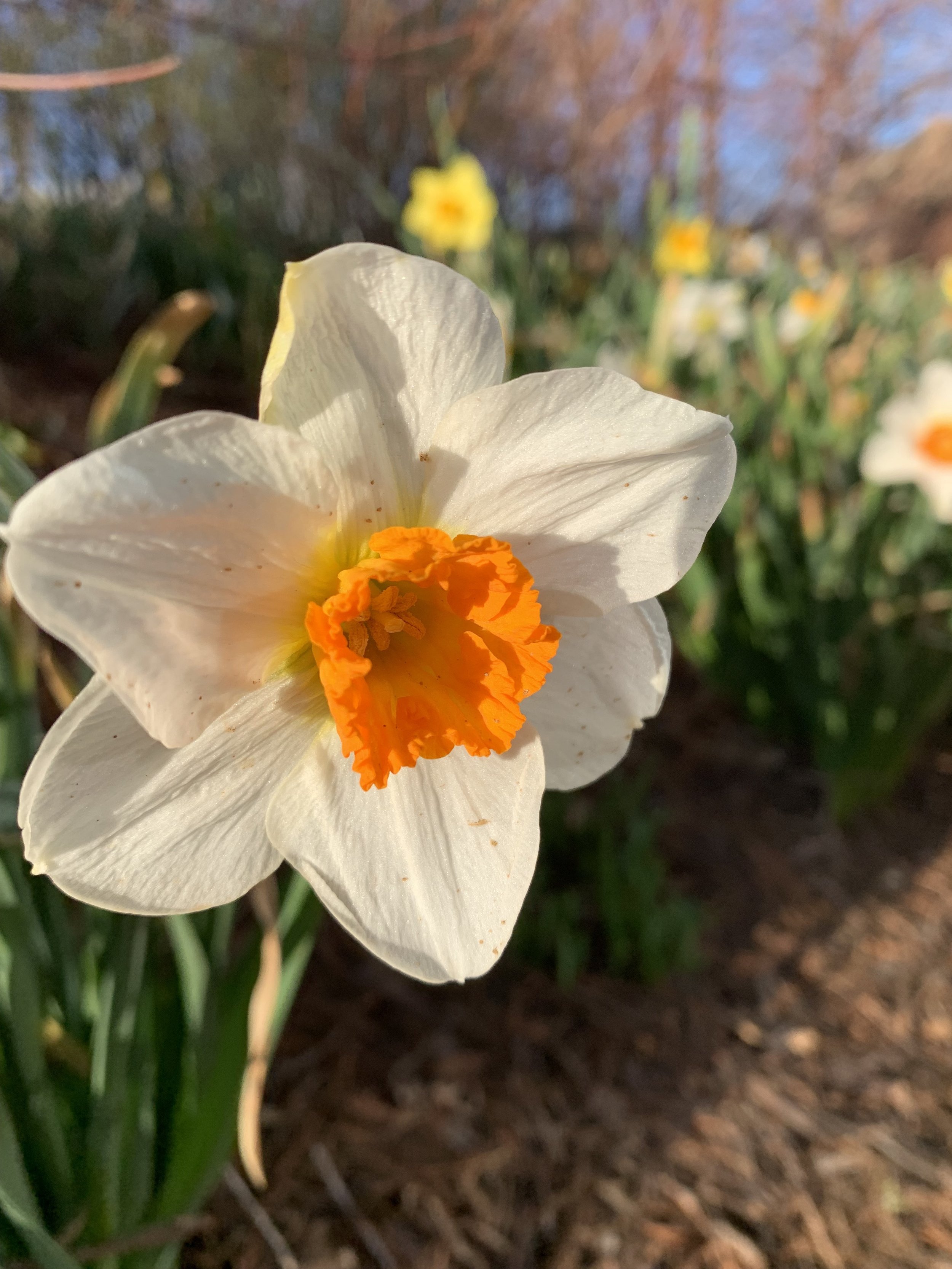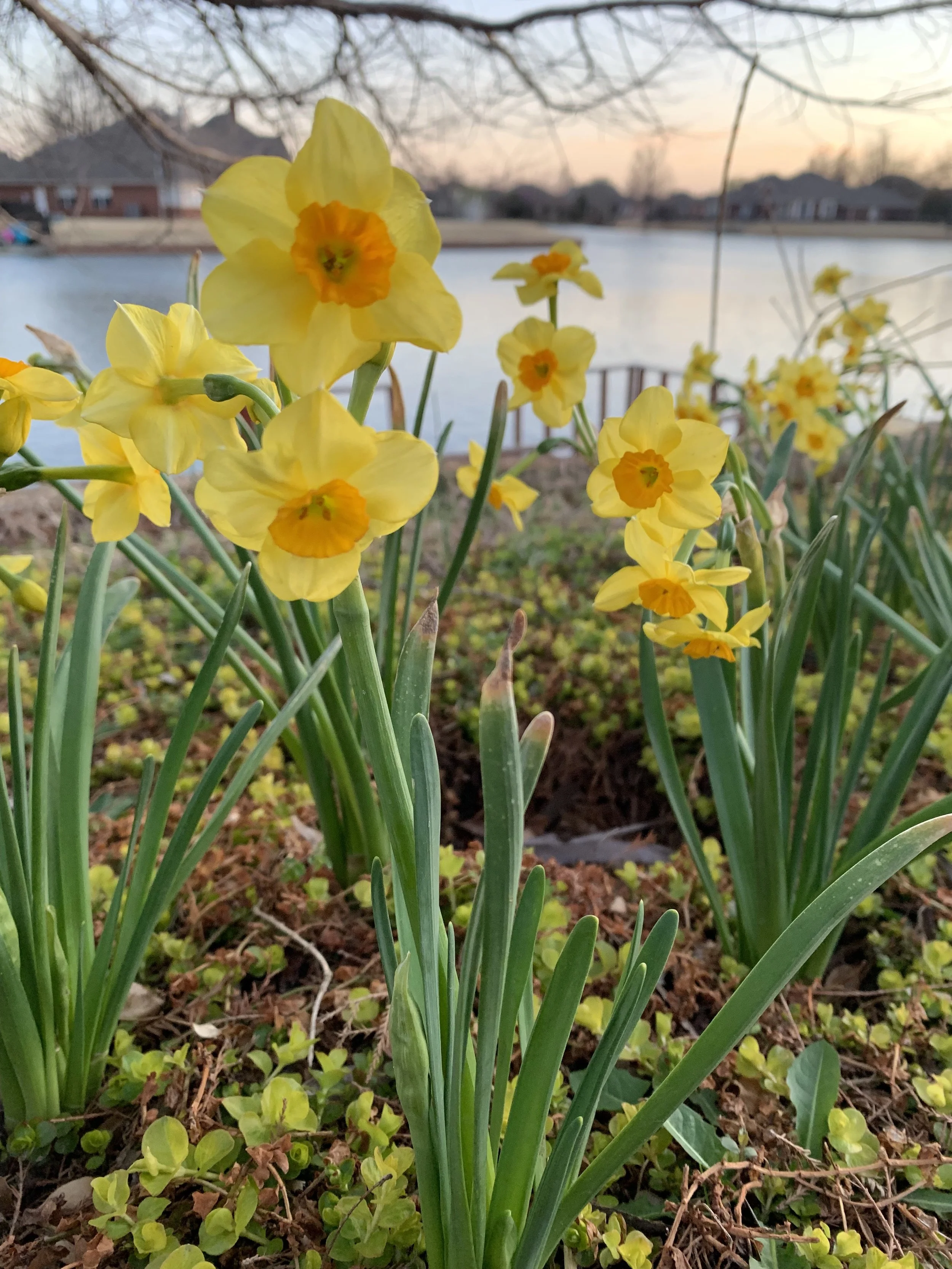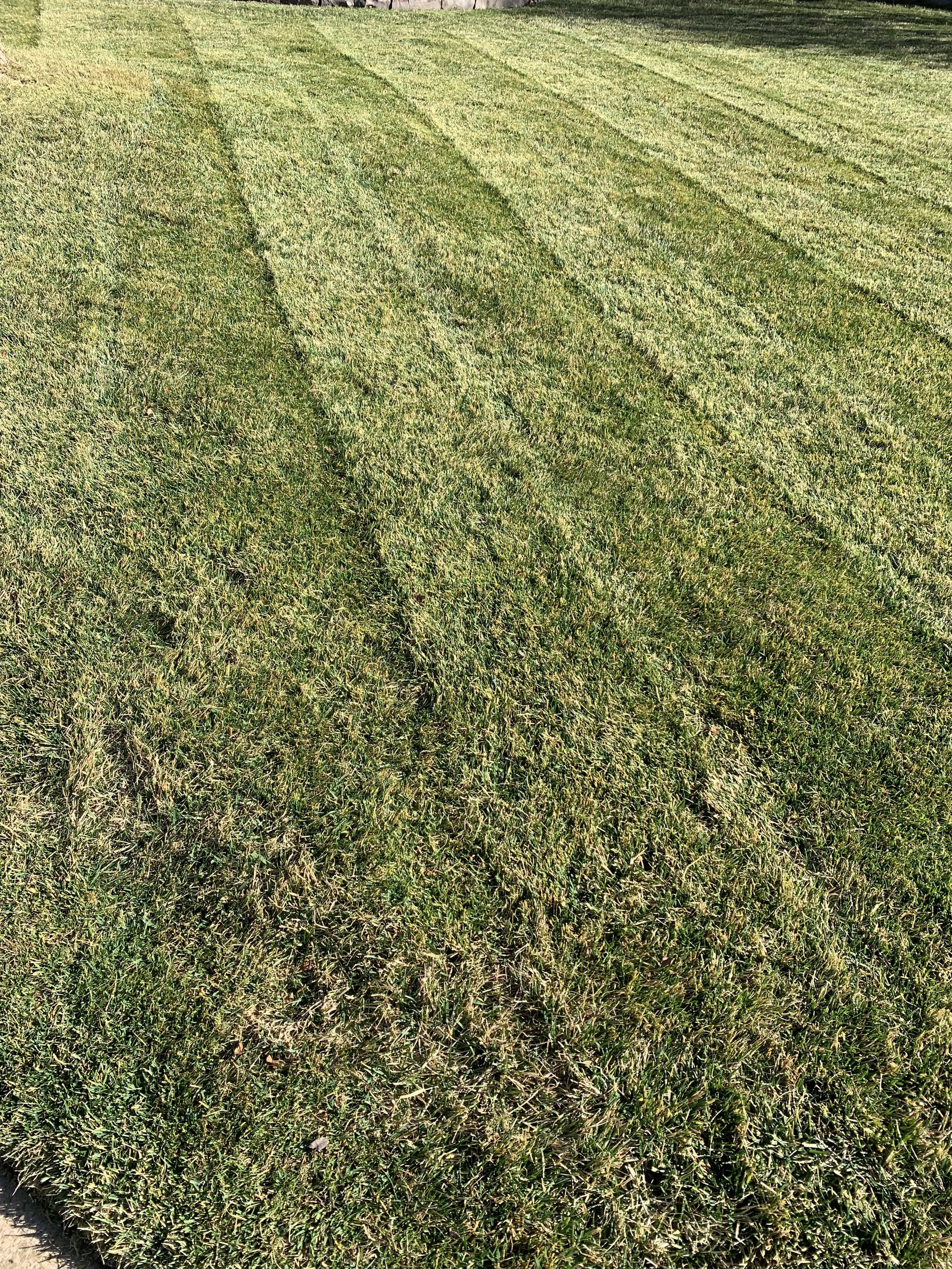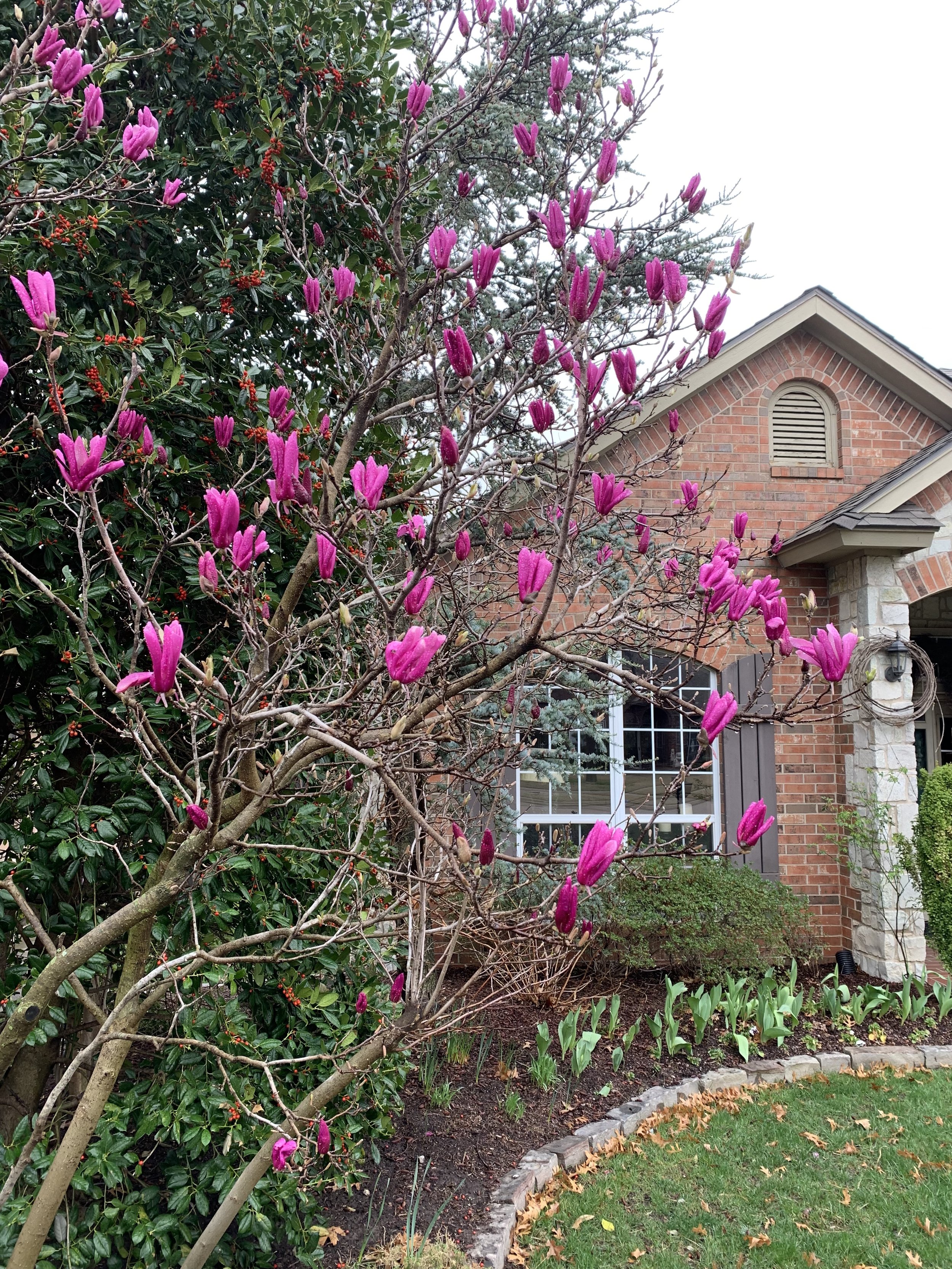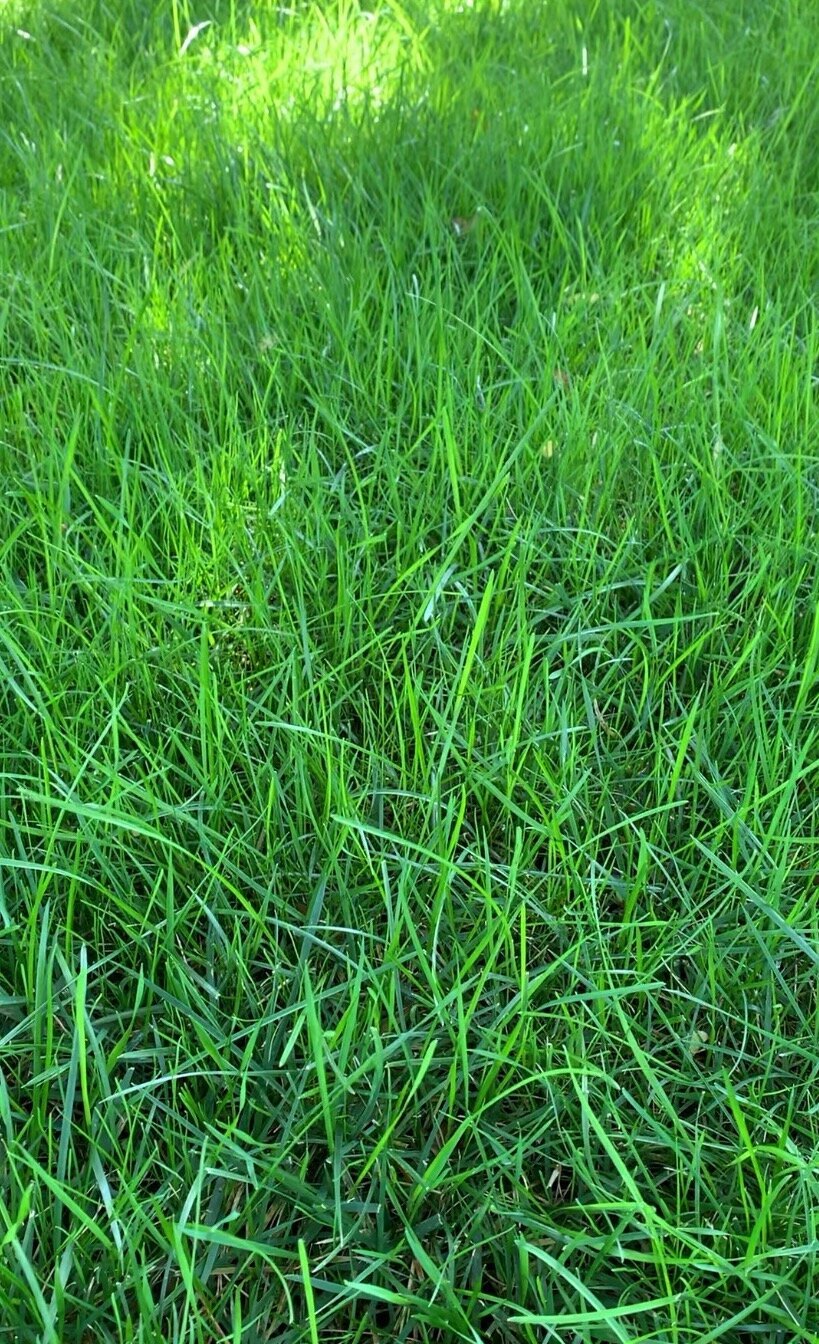
July Lawn & Landscape Tips
As June comes to a close and we head into July, it is amazing just how different our seasons can be. Last year at this time, we were all lamenting how dry June had been and the toll it was taking on our lawns and landscapes.
Well, this June, typically one of central Oklahoma's wettest months, came in strong with nearly 10 inches of rain! That's a huge difference from our normal of just under 5 inches, and last June when we didn’t even top 2.5 inches.
Believe me, your lawn and landscape can definitely tell the difference – can you?
One immediate difference is how incredibly vibrant the summer blooms are this year. Have you noticed the Crape Myrtles, the Vitex, the Rose of Sharon, the Hydrangea, the Hibiscus, and the... [fill in the blank]?
Two of July’s most prolific bloomers: Crape Myrtle and Limelight Hydrangea.
Every summer bloomer is truly putting on their best show!
And now, here comes July. Which way will it go? Will the abundant moisture continue, or will the typical, hot and dry July make its appearance?
Either way, our goal is to help you have a landscape that not only survives an Oklahoma July, but actually thrives. Let's take a look at a few things that will make a difference in your lawn and landscape!
Watering
The biggest determiner on your lawn and landscape thriving through the hottest and driest periods of the summer is practicing the best water techniques. I know…we are repeating ourselves, but it is so important that we are going to keep saying it.
Best watering practices:
Water 1” to 1.5” per week.
Place the Hall | Stewart Rain Gauge in your lawn, give your lawn a good deep soaking and then check the gauge. If you have ½” of water in the gauge you need to water 3 times per week.
Water deep. If you can get ¾-1” of water on your lawn without excessive runoff, water every 4 days. Deep watering creates deep roots and a more drought tolerant lawn.
Set your controller to water with back-to-back run times. If a zone needs to run 30 minutes to get the correct amount of water, set it for 15 minutes and program two start times an hour or two apart. Example: 4:00 AM & 5:00 AM. This ‘Best Practice” will increase the amount of water that soaks into your lawn and reduce the amount of runoff.
Water in the early morning. Evaporation is at the lowest point in the pre-dawn hours and typically wind is at its lowest point. Evening water promotes turf diseases, such as brown patch, and should be avoided.
Daily watering does more harm than good. Short daily watering results in shallow rooted turf and a lawn dependent on constant moisture to survive.
Anytime we receive ½” of rain or more, don’t water for a few days.
Aeration improves moisture absorption.
Watering Tip –
Most people don’t realize how long you need to run the sprinkler to get 1” to 1.5” moisture on your lawn in a week. If your lawn and landscape struggling, take time to place cans around the lawn to collect water. Water your lawn as you normally do and then measure the amount of water in the containers.
If you collected 1/3” to ½”, you are watering long enough for every other day watering.
If you didn’t collect enough during a typical watering, increase the water time and continue watering every other day.
The temptation is to start watering every day, but this creates a shallow rooted landscape that is more dependent on daily water.
Deep watering every other day is the key to a lawn that will thrive in July.
Want to know more about Best Watering Practices? Read our post from last week, Summertime…Water Time!
We are a strong believer in the benefits of not catching your clippings when mowing as long as they are not noticeable. Heavy clippings always need to be cleared from the turf.
Mowing Tip -
One of the biggest differences between a good lawn and a great lawn in the heat of the year is not bagging the clippings. Allowing finely mowed clippings to stay on the lawn returns moisture and nutrients to the soil.
This picture taken on Friday of a fescue lawn demonstrates that fescue is heat tolerant when best practices are followed: deep watering every other day, mowing at 3” with no more than 1/3 cut off per time, and not bagging the clippings.
Mowing
For warm season turfs (bermuda and zoysia) gradually raise the height of your mower. Bermuda should be mowed between 1.5” to 2.5” during the summer heat. Fescue, cool season turf, should be maintained at its maximum height, 3” to 3.5” now. The more leaf space you have the more drought resistant your lawn will be. Mow often enough that you only remove 1/3” of the grass each time. For healthy, irrigated, and fertilized Bermuda, if possible, mow every 4-5 days for the best lawn. If you are mowing often enough and only removing 1/3 of the growth, don’t catch the clippings. Grass leaves are mostly water and nitrogen and break down very quickly into the soil. If your lawn has a brown cast to it after you mow, you are cutting below the leaves and into the stems. Stems do not break down quickly and can lead to thatch build-up, so if this is the case, it is best to bag your clippings when mowing.
Mulch mowing is one of the most beneficial things you can do for your lawn. The key is mowing frequently enough that you are removing no more than 1/3 of the leaf blade.
The tropical type flowers of hardy hibiscus thrive in the heat of July.
Lantana and Coleus are heat loving annual summer color plants.
Limelight Hydrangea
Limelight Hydrangeas grace the July landscapes with large lime-white blooms.
Brown Patch
One benefit of the dry air of July is less brown patch disease in fescue lawns. Brown patch occurs when there is excessive moisture, high humidity, and/or high due points when nighttime temperatures are in the 70s or more and daytime temperatures are in the 90s. Brown patch is worse in areas with dense shade and/or low wind movement. Anytime the leaf blades of your fescue stay wet for more than 6 hours at a time in the summer, brown patch is unavoidable.
The temptation is to water fescue more frequently in the summer. It is common for us to find fescue lawns with the irrigation set to run morning and night creating the perfect conditions for the disease to spread. If you have heavy shade and/or low wind movement (most smaller backyards) water after sunrise and no more than every other day. Resist the urge to water more. Your fescue is not dying due to summer heat, it is struggling with brown patch.
Black Eyed Susan is a favorite perennial during the month of July.
Sunpatiens do well through the summer heat in Full Sun to Part Shade.
Penta is another summer annual that enjoys Full Sun to Part Shade.
Brown Patch Disease will make you think your fescue lawn isn’t getting water, so you respond with more water, which makes the lawn look worse, so you water more…. This fescue lawn was extremely wet this week resulting in self-induced Brown Patch.
Fescue Tip –
The key to fescue surviving the summer is not watering more.
The key is deep soaking every other day.
Watering daily, or as some are known to do, watering twice per day, is one of the worse things for fescue in the summer heat.
Keeping fescue wet will always promote Brown Patch disease.
Crape Myrtles respond to the heat of July with bold pinks, purples, whites, and reds.
Through the summer heat Caladiums and Inpatients will perform well in Full Shade to Part Sun.
Fertilizer
Because warm season grasses are actively growing, they need feeding during July. The plan is to use fertilizer with a 3 to 1 to 1 of nitrogen (N), phosphorus (P), and potassium (K), plus iron (Fe) for added color. Most of our soil has plenty of phosphorus and potassium, but nitrogen needs to be replaced. July is a great month for turf development and a thick, healthy growing lawn is the best defense against weeds. Do not fertilize fescue lawns now. As a cool season grass, fertilizer in the heat of the summer on fescue will cause damage.
Bermuda lawns look their best in the heat of the year when they are properly fertilized, mowed and watered.
Periwinkle is one of the best annual color plants during the hottest periods of the summer.
Weed Control
If you are on a regular lawn care application program, and if your first application was made prior to mid-March, you shouldn’t be experiencing many summer annual weeds. A common weed this time of year is nut sedge. Nut sedge thrives in tight, wet soils. Areas with poor drainage and overwatered turf are frequent trouble spots. If you didn’t get an early pre-emergent, you most likely have a good crop of crabgrass now. Controlling weeds in the heat of the year often can cause more damage to the turf than is beneficial. It is important that label instructions are always followed when spraying weeds. Don’t over apply. What is most important in July is developing thick, healthy turf. If you are too aggressive on weeds now you will have weak spots that are more susceptible to weeds in the future.
Nutsedge
Shrub Pruning
Selective pruning and light shearing should be practiced during the summer heat. If possible, wait to do major pruning during the hottest periods of the summer. Avoid any pruning or shearing on spring blooming plants because you will be removing flower buds and reducing the show next spring.
Early July is your last chance to trim spring blooming plants such as azalea without reducing next spring’s blooms.
Turf areas that receive less than 4 hours of direct sunlight is considered Full Shade. Fescue is the best turf choice in Full Shade to Partial Shade areas.
Aphids
Bagworms
Bagworm
Bagworms continue to be the biggest insect issue currently. Not only are they attacking needle evergreens, but also deciduous trees and shrubs. Inspect your plants frequently.
Aphids thrive in the hot weather resulting in an increase in activity the past couple of weeks. They are easy to spot. Look for glossy, wet looking leaves. The leaves will be sticky and the underside will be covered with insects.
If you see more than an occasional grub when digging in your landscape, we recommend treatment. An occasional grub is good for the environment, but as with most insects, too many and they will cause damage to your lawn.
Insect Watch
The first step to healthy plants is inspecting them regularly and then treating as needed. If you attempt to treat on a schedule, you will find that you often will miss the target pest. These are the insects that are currently most active:
Bagworms – Common on needle evergreens (juniper, cedar, cypress, etc.). If a plant is already stressed due to heat or drought, bagworms can kill the plant. Inspect often and treat as needed.
Aphids – Small sap-sucking insects that leave plants with a honeydew, sticky substance on leaves. Aphids are easy to spot. If the leaves appear unusually glossy stop and look under the leaf, you will find insects hard at work. Aphids thrive in hot, dry conditions.
Spider Mites - They also gather on the underside of leaves but are very small and hard to see. The first sign you may have spider mites is a plant with weak looking, yellowish leaves. Take a white sheet of paper, place it below the leaf and lightly shake the leaf. If you see small specs of red, yellow, and brown on the paper and they start moving around, it isn’t dust and dirt you are seeing, it is spider mites.
Grub Worms – If you have experienced grub damage in the past, or if you have noticed a lot of June bugs around your landscape, July through August is a good window to apply an application for control. Grub worms are the larva form of the June bug. June bugs have laid their eggs, and they are hatching now. Grubs are easiest to control when the new grub is small and feeding close to the surface in July and August.
Spider Mite activity will make a healthy plant look weak with yellowing, speckled leaves.
Place a white sheet of paper under a branch and gently shake the branch. If you see small specs on the paper that are moving around, you are seeing spider mites.
If you have brown patches of turf and can easily pull back the turf, most likely you have grub worms damaging your lawn.
Lantana loves Full Sun but also performs well in Part Sun.
Tree Leaves
Expect some leaf drop on deciduous trees in the summer heat. Some leaf drop is normal as the tree naturally adjusts to less moisture and more heat. The fun fact about most trees is they have a secondary set of buds. If they are stressed, they naturally drop leaves to survive, and then re-bud as they recover.
July, more than any other month, requires you to keep your eye on how your lawn and landscape are doing.
Inspect regularly for insect activity.
Make sure your landscape is getting the correct amount of moisture.
And, mow frequently for the best curb appeal.
We want your lawn and landscape to not only survive this summer, we want it to thrive!
If you have any lawn or landscape concerns, needs, or questions, please give us a call.
Lorne Hall
Hall | Stewart Lawn + Landscape
(405)367-3873
June Lawn & Landscape Tips
Hello Summer!
June… a magnificent month for your lawn and landscape!
June is the month when both cool season and warm season turf look great.
June is the month when an abundance of perennials add color to the landscape.
June is the month when shrubs are covered with soft, tender new foliage and so many blooming shrubs are adding splashes of color.
June is the month summer blooming trees start adding color to our world.
June is the month to discover a new favorite tree, shrub, perennial or summer annual color. What will be your favorite this June?
Awe…June is the month when all your lawn and landscape work this spring rewards you with enjoyable evenings on the patio.
Wait…don’t get too comfortable, it is summer, and your lawn and landscape still need attention:
June is the month for day lilies to add splashes of color to the landscape.
Mowing
Good mowing practices will have the biggest impact on the quality of your lawn over the summer months. For the best summer turf, get into a routine of mowing often enough that you only remove 1/3 of the leaf blade with each mowing. For bermuda and zoyia, both warm season turfgrasses, this may require mowing every 4 to 5 days. If you mow this often, don’t bag your clippings. The top 1/3 of the grass leaf is 90% moisture and nutrients. The best summer height for warm season turf is 1.5 – 2.5”. Fescue, cool season turfgrass, will continue to grow rapidly during early June but once we consistently have temperatures in the upper 90’s it will begin to slow down. The best height for cool season turf in the summer is 3.0 – 3.5”. Both warm season and cool season turfs don’t respond well to being cut below their recommended height. Cutting the lawn too short discourages root development and having deep roots going into the summer heat is important for both warm and cool season turf.
Increase the mowing height on fescue lawns to 3” to 3.5” inches June and maintain that height through the summer.
Fertilizer
Bermuda lawns should be fertilized this month with a higher nitrogen, slow-release fertilizer. The goal in June is to create a healthy bermuda lawn that will thrive in the summer heat. Fescue lawns should only receive low nitrogen, root stimulating fertilizer during June to prepare them for the summer heat.
One of the biggest concerns we have for fescue lawns right now is too many are being cut too short. Cool season lawns will do better in the summer heat with more leaf space. If you have a fescue lawn, gradually raise your mower to at least 3” this month. I started mowing my fescue lawn a ½ notch higher in May and will increase it another ½ notch this week.
Endless Summer Hydrangea are gracing the landscape with their first blooms for the summer.
Weed Control
If you subscribe to Hall | Stewart’s Lawn Care Programs and have not skipped any applications this year, your lawn has had two pre-emergent applications. This will provide your lawn with a good barrier to prevent summer annual grassy weeds. But, if not, you may have some grassy weeds, the most common is crabgrass, showing up in your lawn. June is a good month to control grassy weeds while they are still young plants. Once they mature, stronger products will need to be used which can cause turf damage. If nutsedge is making an appearance in your lawn, it is best not to pull it. When you pull nutsedge and do not remove the nut below the surface, the plant becomes stressed and multiplies.
You can expect to see Black Eyed Susans, a perennial brighten the landscape this month.
Crabgrass is a very fast growing summer annual grassy weed. If you did not get a pre-emergent on your lawn early this year, you are almost certain to have crabgrass growing in your lawn. Treat now with a grassy weed control herbicide. If you wait until July to control, harsh products that will damaged desirable turf will have to be used.
Tree & Shrub Care
The best thing you can do for your trees and shrubs this month is give them your attention. Make it a routine to walk around the landscape looking for plants that just don’t look their best. Most insects are great at camouflage and are hard to spot before you have damaged leaves. Start watching for spider mites. If you notice pale and specked foliage, shake the leaves over a white sheet of paper. If you see tiny specks that start to move, you have spider mites and should schedule a treatment. Be on the watch for bagworms on needle evergreens. When they are young, they are hard to spot. If you notice your evergreens losing color, there is a good chance bagworms are the problem. With all insect and disease issues we subscribe to an integrated pest management approach. With our Tree & Shrub Program, we inspect for issues with each visit. Most problems are easier to control the earlier you notice them. If you notice any issues with your plants, please let us know.
If you notice pale or speckled foliage on boxwood shrubs, shake a branch over a white paper. If you see tiny specks that start to move, you need to spray for spider mites.
As temperatures warm up in June be on the lookout for aphids.
Soft scale can be a problem on Redbud trees. A small 1/16-1/8”, reddish, oval scale that is often found on small twigs and can cause small branches to die if not treated. A treatment plan in late winter with a dormant oil with follow-up treatments in late spring and early summer with a horticultural oil is required.
The lacy blooms of June are a wonderful contrast to the big leaves of the Oak Leak Hydrangea.
I’m always on the look out for new landscape plant materials. This year we have planted a few Orange Rocket Barberry. Typically Barberries have an oval or spreading growth pattern. But the Orange Rocket is known for its upright, compact growth habit.
June is the month an old fashion plant, Rose of Sharon, shows us why we should add tried and true plants to our landscapes.
Bag worms start out small and hard to see. Take time to inspect your needle evergreen shrubs this month.
Do your landscape a favor and keep an eye out for bagworms. They are much easier to control when applications are made early.
Bagworms start out very small and are hard to see. Take time to inspect your needle evergreens before they cause damage.
Annual Color — Sunpatien and Joseph’s Coat
Endless Summer Hydrangeas will make their first big burst of color this month.
Shasta Daisies, a perennial, will bloom from early June through mid-summer. They make great cut flowers.
Who can’t help but fall in love with Oakleaf Hydrangeas at this time of year. Their brilliant large flowers demand attention.
Later this month Mimosa trees will add bright pink, feathery flowers to the landscape.
Shrub Pruning
June is the last month to prune spring blooming shrubs. Spring blooming shrubs start setting flower buds by mid-summer. A few examples of spring blooming shrubs: forsythia, quince, bridal wreath spirea, and azalea. If the shrub is overgrown, use thinning cuts to reduce the size and increase air flow into the center of the plant. Make thinning cuts by removing branches back to the main trunk or another branch. If the shrub only needs a little shaping, make heading cuts near the end of branches. But, remember that all shrubs will perform at their best if they are allowed to grow without heavy pruning or shearing.
Planted in mass Stella D’oro Daylily’s add bright splashes of yellow to the landscape during June.
If your Azaleas have become overgrown or need shaping, June is your last chance to prune them before they start setting buds for next spring.
Our longest blooming plant, the Crape Myrtle, will start its summer long show this month.
Watering
“How much to water” may be one of the most misunderstood aspects of managing a lawn and landscape. Develop the practice of watering based only on need. During the summer months, anytime we get a ½” rain or more, turn your system off for a few days. Depending on afternoon temperatures, a 1” rainfall may save you a week’s worth of water. The converse is true as well. If we go a week without receiving a 1” of rainfall, you need to be watering. Another clue it is time to start watering… when you walk on the lawn, if the grass doesn’t spring back up and your footsteps remain in the lawn, it is time to start watering. Remember, deep soakings are always better than short, frequent watering. Shallow, frequent watering results in lawns with less roots and more dependent on water. Throughout the summer make it a habit to inspect your landscape and adjust. Don’t set your irrigation controller at the beginning of the season, never touching it again until the fall.
Trumpet Vine
By mid month Limelight Hydrangea and Hibiscus will be adding big blooms to our landscapes.
Mulch
Add mulch to your landscape plantings this month. A 2” layer of mulch will retain moisture, cool the soil, and reduce weed germination. We prefer premium shredded all bark cedar mulch because it doesn’t float as much and aesthetically looks great. For acid-loving plants such as hydrangeas and azaleas, pecan hulls or pine bark mulch is a great choice.
Endless Summer Hydrangea
Goldflame Spirea
Annual color planting of Joseph Coat, Sunpatien, and Marigold make a great yellow/orange color scheme.
Hardy Hibiscus
Brown Patch
Be on the lookout for brown patch in your fescue lawn. June is the most active month for this disease in fescue lawns. Anytime nighttime temperatures are 70 plus and the turf remains damp for over 6 hours at a time, brown patch will develop. Areas where there is little air movement and/or heavy shade are more prone because the turf stays wet longer. Brown patch will make the lawn appear it needs more water, but watering will just make it worse. So, before you water more, think about the site, the amount of shade, the air movement in the area, and the amount of moisture the area has received. The best thing you can do if this problem occurs is to stop watering.
One of the most self-inflicted problems with fescue lawns is watering practices that promote the development of brown patch. Always allow your fescue time to dry out between waterings. Avoid watering fescue in the evening during the summer.
If you subscribe to Hall | Stewart’s 7-Step Lawn Care Program and have fescue, you will receive a fungicide this month designed to suppress the brown patch fungus.
Brown Patch will make fescue look like it needs more water, but the problem is actually the result of the leaf blades staying wet for over 6 hours at a time when nighttime temperatures are in the 70s.
There are many varieties of Spirea’s with yellow and green foliage that put on blooms in the early summer.
Crape Myrtle
Yarrow is a perennial that produces yellow flowers in late May and early June.
Also, Cone Flower, another summer perennial will make a showing in June.
Oakleaf Hydrangeas with their lacy white blooms and large oak shaped leaves put on a show from late May through mid June.
Anthony Waterer Spirea is a medium sized shrub that is covered with pink flowers in late May and early June.
Aeration
Mechanical aeration is a “best” practice for any lawn. Aeration reduces soil compaction, promotes root development, and thickens the turf. May and June are the best months to aerate bermuda. This one practice will make a significant difference in the quality of your turf. The stronger the turf, the less weed problems you will experience.
Summer Crush Hydrangeas are a reblooming hydrangea that produces large floral quality blooms in your landscape.
Insects
Regularly scheduled treatments for fleas & ticks, mosquitos, and perimeter insect control around your house should continue during the summer. The goal is to make outdoor living for your family and pets the best possible.
Southern Magnolia trees produce large white flowers in early summer. Teddy Bear and Little Gem Dwarf Southern Magnolia are great plants for smaller landscapes.
Texas Red Yucca produce tall red flowering spikes this month. There are several varieties. Brakelights Res Yucca is a favorite.
Awe…may your June be filled with time outside, in your lawn and landscape, on your patio with family and friends, enjoying the beauty every day!
If you have any questions, please send us an email or call.
Oh, and when you discover something new and exciting in the landscape, don’t keep it a secret, send us a picture!
Lorne Hall
Hall | Stewart Lawn + Landscape
(405)367-3873
March Lawn & Landscape Tips
March, the month our world awakens from its winter slumber!
March, the month our world bursts with color!
March, the month you just want to be outdoors in your lawn, in your landscape, and on your patio!
After a cold third week of February, the spring like weather this week has added a smile to faces and put a spring in our steps.
So, get outside. Enjoy every minute of every spring day. Spend some time in your lawn and landscape.
Here are a few lawn and landscape tasks you should tackle this month:
No two springs are a like. This picture is from February 24, 2024. And tulips were already adding color to the landscape. This year, after a very cold mid-February tulips are just starting to emerge from the soil.
Forsythia pictures from last spring!
If you haven't already, cut your fescue lawn to remove the freeze damaged leaf tips and soon the lawn will return to full color and start growing.
Spring Lawn Maintenance – Get the mower out and get it started. It is much easier to remove the winter damaged leaf blades before the turf begins to green-up. Remember, scalping on the lowest setting isn’t required and isn’t recommended. Simply mow the lawn at the height you plan to start the mowing season.
For most Bermuda lawns, the second setting is recommended. For fescue, start on the second or third notch on your mower.
We are often asked about dethatching at this time of year.
What is dethatching? Dethatching is the removal of excessive thatch that builds up on the soil surface by using a vertical power rake.
But, unless you have a thick layer of ½-1” or more of thatch, dethatching causes more damage to the crown of the plants than it does good. So, with only a few exceptions, the best method for reducing thatch is an initial spring lawn maintenance followed by aeration after spring green-up. Unnecessary dethatching and scalping the lawn too low removes the canopy opening the lawn up to disease and weeds.
Need more info on the first mowing of the season? Check out last week’s post!
Lawn Maintenance – As soil temperatures climb and occasional spring rains return, as soon as you remove the winter damaged leaf tips from your fescue lawns, they will regain color and start growing. Start your cool season lawn off right by maintaining it at 2 ½ - 3”. When it starts growing, mow frequently enough that you are never removing more than 1/3 of the leaf blade per cutting. So, if you plan to maintain a 3” level, don’t allow the lawn to grow past 4.5” without giving it a trim.
If you have warm season turf, bermuda or zoysia, after you cut the lawn for the first time to remove the brown winter damaged leaf blades, most likely you can put off regularly scheduled lawn mowing until April.
Saucer Magnolia is a small deciduous tree with saucer-shaped white, pink or purple blooms in early spring. It makes a great specimen tree from the spectacular spring blooms to its spreading, multi-trucked shape.
Tulips from last spring.
Saucer Magnolia is a spring favorite.
Headed to Dallas in the next few weeks? Add the Dallas Arboretum to your places to visit during their spring Dallas Blooms event, now through April 8th.
One of the first shrubs to announce spring is forsythia. Interesting tidbit: when forsythia starts blooming it is an indicator that crabgrass has started germinating.
Lawn Weed Control – Summer annual weeds begin germinating when soil temperatures consistently reach 55 degrees. With the above normal temperatures over the past week, soil temperatures have quickly climbed into the upper 40s to low 50s. Unless we have another cold spell, we are on course to see soil temperatures consistently reach 55 degrees by mid-March.
If you have not applied the first spring pre-emergent yet, please do so as quickly as possible. Whether you apply a pre-emergent yourself, or we do it for you, always follow instructions. Watering is a required step to move the herbicide into the top ½” of soil.
Want to know what crabgrass will do to your lawn this summer if you don’t apply a pre-emergent?
This is the month landscapes are filled with the bright pinkish-red colors of Redbuds, the Oklahoma State tree
Bed Weed Control – March is an excellent month to apply a plant safe pre-emergent to your landscape plantings. Use caution in selecting the product to make sure it is safe for your plants. When possible, select a granular pre-emergent mixed with a fertilizer containing approximately 20% nitrogen. Doing so will give your plants a good spring feeding while preventing weeds at the same time.
Lawn Fertilization – This month is a good time to start fertilizing your cool season lawns. Use a fertilizer with 25-30% nitrogen. Cool season lawns need to be fed more in the spring and fall when they are actively growing, and less in the summer.
If you have a warm season lawn, wait until lawns begin greening up to apply the first fertilizer application.
Tree & Shrub Care - If you struggled with aphids, mites or scale in the past year you still have time to apply a dormant oil application for another couple of weeks. Dormant oils work by suffocating, smothering overwintering insects. Oil blocks the air holes causing the insect to suffocate. Dormant oils are an eco-friendlier approach to insect control by reducing the need for harsher control methods later.
Spring is also a good time to fertilize trees and shrubs with slow-release nitrogen, high quality phosphorus and potassium as well as micronutrients to provide consistent, extended feeding. This formulation is ideal for improving tree and ornamental development and vigor without unwanted shoot growth. March is also a good time to apply systemic insecticide to control sucking and chewing insects.
Hyacinth is one of the first spring blooming bulbs to add splashes of color to the landscape.
Not all the colors of spring are blooms. Be on the watch for the bright colors of new leaves such as the yellow, oranges and reds of Goldmound Spirea.
Mulch – Spring is a great time to mulch your landscape plantings. Maintaining a 2” layer of organic mulch will reduce weed population, retain soil moisture, and provide a more consistent soil temperature for plant roots. I find adding mulch an easier task in the spring when I am cleaning my landscape plantings for the first time.
Irrigation – It is always important to monitor rainfall and water based on need. January and February, typically our driest months, have once again lived up to expectations this year. It has been over 50 days since we last received a ¼” of rainfall. Until there is a good rainfall, give your lawn and landscape a good soaking every 4 to 7 days. As temperatures warm up, gradually increase the frequency of watering but delay watering every other day until late spring to early summer. Always delay watering for a few days when we receive a ¼” rainfall or more. You will save both water and money if you always water on an as needed basis.
Flowering Quince with bright orange to red flowers is one of the first shrubs to declare spring.
Spring Seasonal Color – Pansies are the toughest winter annual color, but it is common for them to look a little freeze burned after the winter. As long as the crown of the plant is not damaged, they will return to life and bloom this spring. The great thing about pansies is they add color to the landscape until it is warm enough to plant summer annuals.
Wait until April to plant impatient, begonia, geranium, etc. And remember, most summer annuals need the warmer soil temperatures of late April or May before they are planted. If you get in a hurry, you will end up planting your summer annual color twice. When planting, remember most plants prefer well drained, organic soil and would prefer you add compost when planting.
Seeding Fescue – March is the second-best time to overseed fescue. But, it comes in a very distant second to seeding in the fall. Spring seeded fescue will come up very well and look very good till the summer heat arrives - then it fades quickly. Fescue, being a cool season grass, will not establish a sustainable root system when planted in the spring. Give your fescue lawn a chance to green up first to get a better feel on the overall condition of the lawn. If you still feel you have bare areas that need to be addressed now, seed this month but still plan on seeding again in the fall. In most cases waiting till fall to seed is best. Fall seeding allows you to focus on weed prevention and turf development in the spring and turf establishment in the fall when it is best.
Bridal Wreath Spirea will add graceful white blooms toward the end of March.
Creeping Phlox is one of the first perennials to announce spring has arrived.
Pruning – March is the time to do heavy pruning on your roses. March is also the best time to make a major reduction in the size of hollies, boxwoods and most broadleaf evergreens. Before spring growth arrives, you can successfully remove all the foliage back to the central leader if needed.
Need more information on spring pruning?
If you need help with any of your lawn and landscape tasks, or just have a few questions, please don’t hesitate to give us a call or send us an email.
Lorne Hall
Hall | Stewart Lawn + Landscape
(405)367-3873






